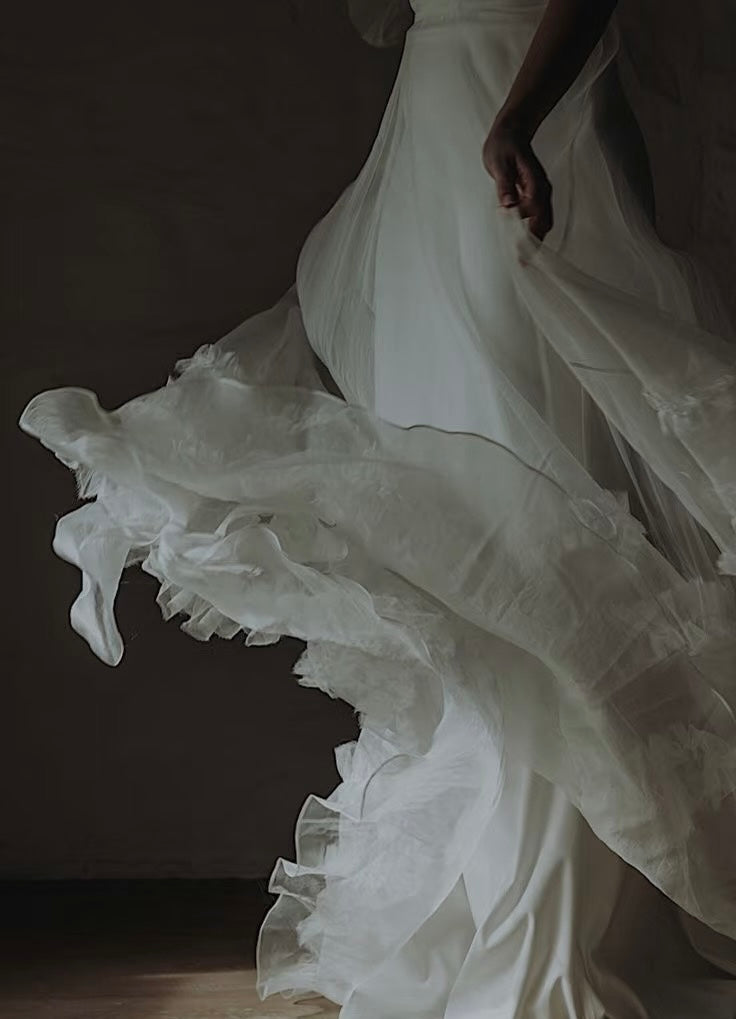
What Is Chiffon Fabric? A Guide to Its History, Uses, and Quality
In the fashion world, chiffon is both loved and misunderstood. Often associated with budget-friendly clothing, it's been labeled as cheap or fragile.
But is that really the full story?
Let’s break down what chiffon fabric truly is, where it came from, how it's made, and what makes one chiffon better than another.
Where Does Chiffon Come From?
The word "chiffon" comes from the French word for cloth. Historically, chiffon was a luxury fabric made from silk and reserved for royalty and elite eveningwear.
It wasn’t until the 20th century that technology enabled chiffon to be woven with synthetic fibers like polyester and nylon, making it more affordable and accessible.
What Is Chiffon Made Of?

Today, chiffon can be made from silk, polyester, rayon, or nylon. What sets chiffon apart is its sheer, lightweight, and slightly rough texture.
It’s a plain-woven fabric that creates a subtle stretch and beautiful drape, thanks to its alternating S- and Z-twist yarns.
Despite its delicate appearance, good-quality chiffon has strength and durability—when chosen right.
Why Chiffon Has a Bad Reputation
Chiffon’s low-cost, mass-produced versions are often thin, scratchy, and prone to fraying or snagging. This gave chiffon its reputation as a "cheap" fabric. These versions often:
- Smell of chemicals (from harsh synthetic dyes or finishing agents)
- Feel plastic-like or overly stiff
- Lose shape quickly after washing
But high-quality chiffon tells a different story. When sourced well, it feels buttery soft, drapes fluidly, and elevates any design it's part of.
How to Tell Good Chiffon from Bad
Here’s what to check:
- Fiber Content: Silk chiffon is premium. Polyester chiffon is more affordable but varies greatly.
- Weave Density: Higher thread count = smoother finish and less transparency.
- Touch Test: Good chiffon should feel soft and breathable, not overly plasticky.
- Smell: A strong chemical odor is a red flag for low-quality dyes or residue.
Is Sheerness Always a Bad Thing?
Not at all. Chiffon is supposed to be sheer—but not see-through to the point of flimsiness. A well-made chiffon offers opacity without sacrificing lightness.
What Is Chiffon Used For?
Fashion designers love chiffon for its weightless elegance. It’s used in:
- Evening gowns and cocktail dresses
- Scarves and shawls
- Blouses and flowy skirts
- Lingerie and layered slips
Beyond fashion, chiffon also appears in:
- Wedding decorations and drapery
- Ballet costumes
- Theatrical stage settings
Sewing Tips: How to Handle Chiffon
If you’ve ever tried to sew chiffon, you know it can be slippery and unforgiving:
- Pin Sparingly: Use fine, sharp pins to avoid visible holes.
- Use a Walking Foot: This prevents the fabric from shifting under your needle.
- Tension and Needle: A smaller, sharper needle (like size 60/8 or 70/10) reduces skipped stitches.
- French Seams: Great for preventing fraying and keeping garments polished.
If your machine constantly skips or snags stitches, try placing tissue paper beneath the fabric while stitching. Tear it away afterward.
What Looks Best in Chiffon?
Chiffon shines in garments that need movement and flow. It’s ideal for:
- Maxi dresses
- Kimono-style tops
- Bohemian skirts
- Ruffled or pleated pieces
Chiffon isn't about structure—it's about emotion. It moves with you. It adds softness. And when used thoughtfully, it can bring elegance to both high fashion and everyday wear.
Final Thoughts
Don’t let a few bad experiences ruin chiffon for you.
Like any fabric, its value depends on the intention behind its use and the quality behind its creation.
When chosen well and treated with care, chiffon is anything but cheap. It’s timeless, poetic, and surprisingly versatile.
Curious how chiffon works with different body types? Discover how flowy skirts flatter every figure—and why chiffon might be the perfect fabric for your shape.

